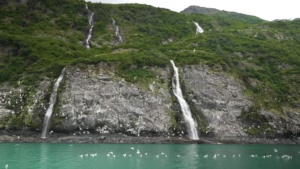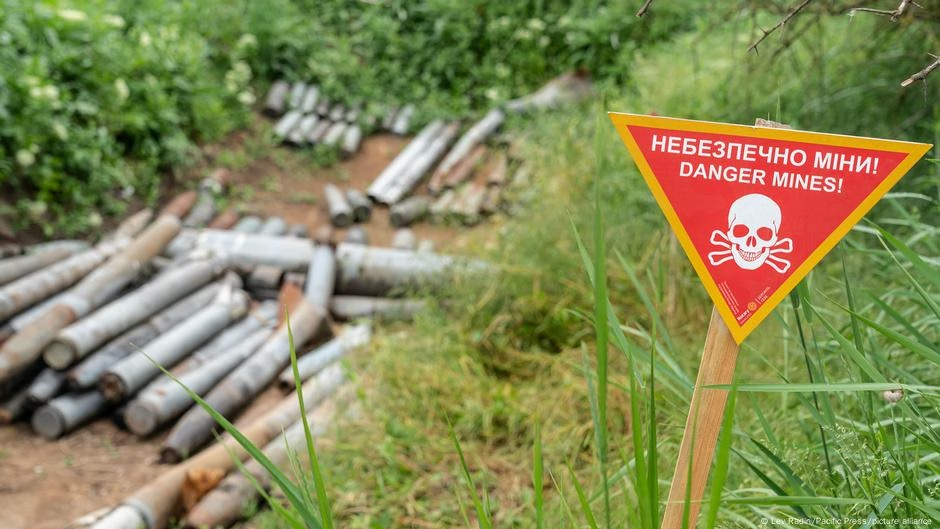Over the past three years, five out of six NATO countries bordering Russia or Belarus—Finland, Estonia, Latvia, Lithuania, and Poland— have made significant investments to better secure these borders. This includes initiatives such as erecting fences and deploying surveillance systems.
Now, a plan for another security measure has emerged: the use of land mines.
Eastern NATO Members Bolster Border Security with Land Mines
Recently, these five NATO countries have announced their withdrawal from the Ottawa Convention, a 1997 treaty that prohibits anti-personnel mines. All except Norway, which borders Russia along a nearly 200-kilometer stretch, have decided to withdraw. Norway will adhere to the treaty.
Anti-personnel mines are highly controversial due to the danger they pose to soldiers and civilians. They remain a threat for decades after conflicts end. In 2023, nearly 6,000 individuals worldwide were killed or injured by mines, with 80% of the victims being civilians, including many children.
Clearing these mines is hazardous, costly, and time-consuming. According to Handicap International, 58 countries and areas worldwide, some with conflicts that ended decades ago, remain contaminated with mines.
Beginning at the end of 2025, these five NATO countries could resume production and storage of anti-personnel mines near their borders. In emergencies, these mines would be deployed swiftly.
While 164 countries have signed the Ottawa Convention, 33 have not. Besides major powers such as the US and China, this includes Russia. Russia owns the largest stockpile of anti-personnel mines worldwide, estimated at 26 million, some of which are currently being used in Ukraine.
A New ‘Iron Curtain’
The border between these five NATO states and Russia and Belarus spans around 3,500 kilometers, from Finnish Lapland to Poland’s Lublin province. Much of this area is sparsely populated and heavily forested, complicating monitoring. There is significant concern about the possibility of a Russian attack on NATO territory. NATO experts are analyzing which areas could be targeted, indicating that these five countries aim to maximize deterrence through border security measures and mines, intending to impose such heavy losses on any advancing enemy that Moscow would be discouraged from a prolonged conflict.
To effectively secure their long border, these countries would likely need millions of mines and other concealed explosives. Large areas would become uninhabitable for decades, with unpredictable damage to people and the environment.
David Blair of The Telegraph describes the plan as a new, explosive “Iron Curtain,” reminiscent of the heavily guarded Cold War border between NATO and Warsaw Pact states. Besides mines, these eastern NATO states are reinforcing their border fences and walls, installing modern surveillance systems, strengthening troop contingents, and planning to deploy drone defense systems along the border and use irrigation systems as emergency trenches.
Necessary or Irresponsible?
Lithuania, bordered by Russia’s Kaliningrad exclave and Belarus, is especially vulnerable. A narrow, 65-kilometer land connection (the Suwałki Gap) links the Baltic states and Poland, making the area a likely target for an initial Russian attack.
Lithuania plans to invest €800 million in new land mines over the next few years. Lithuanian Defense Minister Dovile Sakaliene argues this is a response to the “existential threat” her country faces, noting Russia’s recent mine production and Europe’s destruction of its own stockpiles under the Ottawa Convention.
Eva Maria Fischer, advocacy head at Handicap International Germany, calls the land mine plan dangerous and concerning. She suggests that long-lasting security should not be built on weapons that kill indisciscriminately, remain in the ground long after conflicts end, and continue to maim civilians and destroy livelihoods. She points out that there are alternatives to defending a country, although these may be more expensive upfront, they are not when considering the long-term costs of using anti-personnel mines.
This article was originally written in German.







